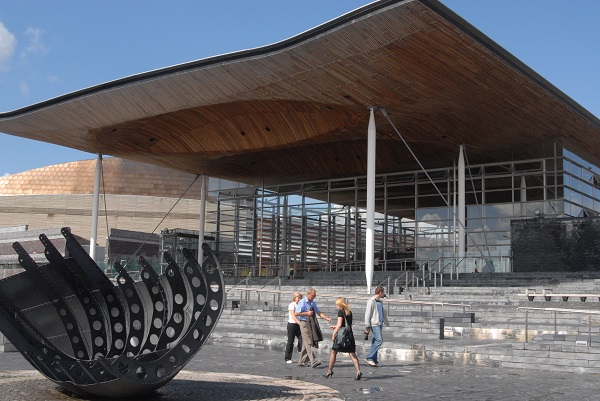 Bevan Foundation
Bevan Foundation 
As the discussions between Labour and Plaid about the next First Minister and Welsh Government continue, Victoria Winckler reflects on the 2007 One Wales agreement.
Writers across the political spectrum are united in describing last week’s events in the Senedd as ‘high drama’. Cardiff University’s Jac Larner said it was ‘one of the most turbulent days in the institution’s short history’ while Mat Mathias said ‘I can’t remember the Assembly being this exciting’.
In fact we have been here before, back in 2007.
Nine years ago Labour secured just 26 seats, five short of a majority. Over the next two months, the parties tried and then rejected virtually every political permutation they could. The first, and widely expected, option of a Labour-Lib Dem pact fell through early on as most Lib Dem AMs rejected it. The second, and pretty well unforeseen, option was the so-called Rainbow Coalition of Plaid, Lib Dems and Conservatives. This option seemed set to go ahead, only falling at the very last hurdle of a Lib Dem special conference. The third permutation was pretty well all that was left (bar a Labour-Conservative deal) – and it was the Labour-Plaid ‘One Wales’ agreement which eventually won the day.
I was asked to write that document, based on the points as agreed between the parties. I did so as a commercial service that would have been available to anybody – from memory I was paid the princely sum of £2,500 for my efforts.
And while nine years is a long time ago, there are some important lessons from that process for today.
Manifestos Matter
In 2007, the party manifestos acted as the parties’ shopping lists, as each looked to maximise the number of manifesto commitments in the resulting programme of government. The detail and ambition of Plaid’s 2007 manifesto served it well, bringing forward developments that have proved game-changing (the Holtham Commission, a referendum on law-making powers and the introduction of the wales domain name to name but a few). Labour’s less specific manifesto gave it flexibility but also fewer ‘lines in the sand’ in discussions.
So to get a flavour of what the next five years might bring, you’d be advised to read the Plaid and Labour manifestos – looking for what they don’t say as well as what they do.
Negotiations are tough
Negotiations are tough. In 2007, some discussions went on all day to produce a single bullet point of agreement. Even then, the wording of a single point of agreement could be changed several times to accommodate slight differences of interpretation or tone. Ministers will come and go, but if the agreement is to last for the full Assembly term what is written down must accurately and comprehensive reflect what was agreed.
Ideology matters
Plaid and Labour in 2007 had very similar concerns: strengthening the economy, improving health and health care, and raising educational attainment. Where there were differences they were mostly about delivery mechanisms (such as whether the Welsh Government should pursue economic growth from within the civil service or through an arms’-length agency) or emphasis (a green jobs strategy vs sector strategies).
So why was getting agreement sometimes so difficult?
Partly because the qualities needed to form a partnership or coalition – trust, an ability to listen and ability to compromise – do not come easily when politicians have spent the last three months rubbishing the other party and seeking to annihilate them (electorally!).
But also there were deep-seated differences in ideology. In trying to weave the agreed negotiating points into a narrative, it was clear that the idea of national identity and national institutions strongly shaped Plaid’s thinking (as you might expect) while that of a strong public sector and a collectivist society shaped Labour’s. So sometimes the similarities between the parties were more real than appeared at first.
The real political geeks might want to look beneath the surface of the parties’ manifesto to get a sense of where the sticking points might be.
Beware the spanner in the works
And last, if 2007 is to teach us anything, it is to expect the unexpected. Nobody – and I mean nobody – thought that the Lib Dems would reject the Rainbow Coalition at the 11th hour. The One Wales agreement itself nearly came unstuck the last minute, as members at the Labour conference called to approve it pressed for a Labour minority government instead.
So, 2007 may not have had the ‘as it happens’ immediacy of 2016 – no Twitter or media ‘live updates‘ then. But what we need to learn is that 2016 is not the first time that a party has not had an overall majority and it is unlikely to be the last. We’d better get used to the excitement!
(And in case anyone would like me to write a 2016 agreement between the parties, the answer is no.)
Victoria Winckler is Director of the Bevan Foundation.
For a free, monthly update about our activities please sign up for our e-newsletter.


